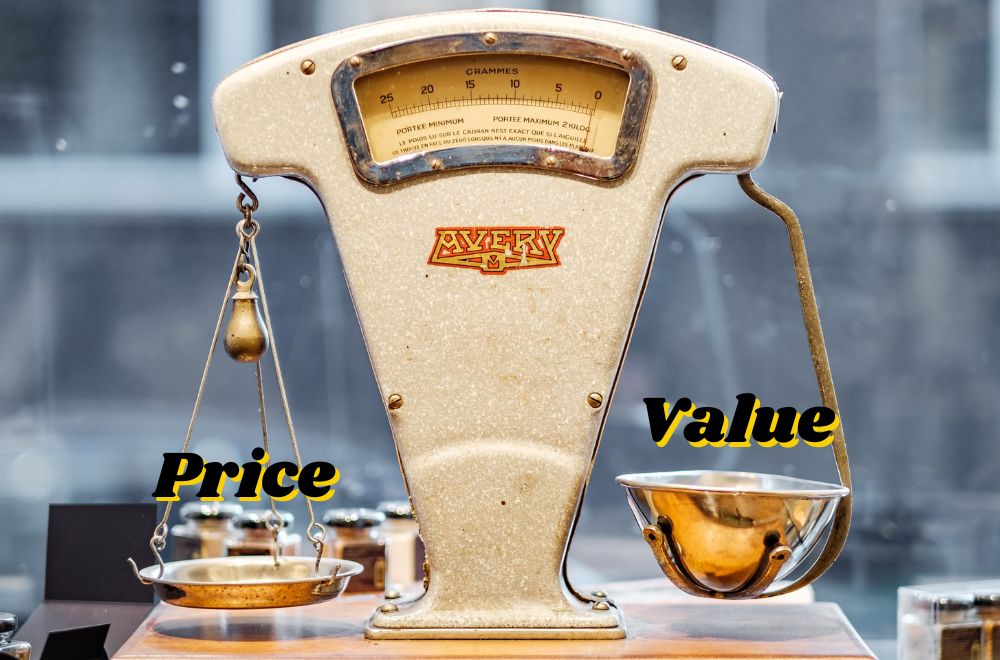
The price vs. value conundrum is alive and well with companies and their customers.
Businesses will tend to raise prices when they can, especially in an inflationary economy. But do they also increase the value of their products for consumers?
When travel resumed as the nation recovered from the COVID-19 pandemic, for example, American Express raised the annual fee for its already pricey Platinum Card from $550 to $695.
That’s a 26 percent increase. Steep, right? But the higher fee came with a head-spinning array of new benefits for cardholders, including statement credits for hotel bookings and newspaper subscriptions, and access to exclusive restaurants and premium events.
Did customers revolt? Apparently not. The credit card company just announced it is raising the Platinum Card annual fee again, to $799.
Related: How Discover Card Uses Voice Of The Customer To Improve Digital Experience
At a somewhat different end of the economic spectrum, a café in Brooklyn raised prices to keep up with what the owner said was the rising costs of milk, coffee, and other products. Nearly half of the regular customers bolted, some choosing to buy coffee at a nearby bodega instead of the $3 charged by the Bushwick Grind Café.
The café’s owner seemed to acknowledge that the price hike had not necessarily increased value, telling The Associate Press: “If (customers) can get it for a dollar for not that notable of a difference, they’re going next door.” Price vs. value, indeed.
The two examples are not perfectly analogous, of course. A massive company like American Express is likely better positioned to provide benefits – especially for the high-end customers who use its cards – than a café and other small businesses.
But they illustrate a broader customer experience precept about the relationship between price and value. Brands naturally worry about the bottom line, and consumers have faced what seems like a never-ending series of increased prices and fees as companies pass on their own higher costs due to inflation and lingering pandemic effects.
Raising Prices Through the Lens of the Customer
Yet there are risks to hewing too far in the direction of profits as opposed to keeping customers happy. After all, it’s the little things that often matter in customer experience, a series of small niceties that ideally add up to a big whole.
In practice, that means only focusing on the bottom line can lead to bad or inconsistent customer experience, and competing on price – and only price – is a good example.
If costs keep going up, brands will need to raise prices at some point. But they should also try to add some value to compensate for the added expense.
In other words, don’t just assume customers will be ok with paying more. Look at the business through their lens – and keep thinking about ways to improve their experience even as you reach deeper into their wallets.
Customer Experience Examples Showing Price vs. Value
Amazon, long known for its superior customer experience, has managed to do just that with its more expensive Amazon Prime memberships.
Though the subscription service’s price hikes have been large on a percentage basis, they have also brought a mind-boggling bevy of benefits, ranging from Amazon Prime Video and Amazon Prime Music to discounts at Whole Foods – while keeping the free Amazon shipping.
That’s both smart business and good customer experience.
Less so for the airline industry which, as longtime travelers know, allowed fliers to check at least one bag free for decades. That changed in 2008, when American and United added a $15 bag charge – which has since snowballed to all sorts of additional fees and upcharges. A $15 bag charge is a bargain by today’s standards.
Sure, the industry today makes tens of billions of dollars on extra fees. But the lack of accompanying value for passengers is epitomized by headlines such as “How airlines squeeze you for every penny.”
Similarly, anyone who has tried to buy a car recently knows that new car prices have surged, driven by inflationary costs, supply chain issues, and a shortage of semiconductor chips.
While those pressures may have been unavoidable, how has the industry reacted? By prioritizing the most profitable cars – which happen to be the most expensive – and dramatically cutting production on some cheaper cars.
All of which has further squeezed “already strained consumers,” causing growing numbers of people to fall behind on their car payments.
It’s hard to see the increased customer value in that.
Experts Say Add Value Along With Price Hikes
While some price increases are inevitable, customer experience professionals agree that brands should tell customers why they’ll be paying more – and try to bring more value to the equation.
As one brand marketing site put it: “price hikes only work if the customer perceives the brand to be worth the cost.”
One Harvard Business School expert has formalized the relationship between price and value, advocating for companies to use a “value-based pricing strategy.”
That’s also known as “customer-focused pricing,” symbolizing a key lesson that companies should keep in mind as they wrestle with rising costs in the post-pandemic world: do what you have to do to stay in business.
But never forget that behind those bottom-line numbers are customers who are paying for your profits. At least give them some more value for the privilege.
Photo illustration by Dan Gingiss based on image by Piret Ilver on Unsplash.
